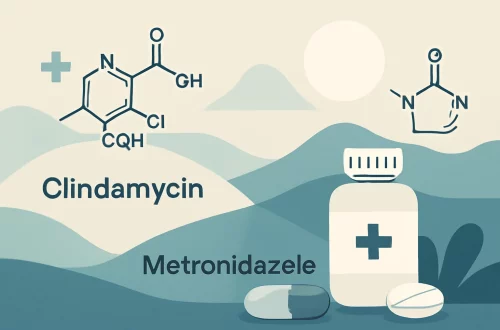
Unlocking the Secrets of Fat Quads for Ultimate Leg Development
Building impressive leg muscles is a goal for many fitness enthusiasts, and the quadriceps are often the focal point of this endeavor. Known for their prominent role in leg strength and aesthetics, well-developed quads can significantly enhance athletic performance, improve balance, and contribute to a well-proportioned physique. However, achieving this coveted look requires more than just heavy squats; it involves understanding the anatomy of the quadriceps, the right exercises, proper nutrition, and recovery strategies.
Quadriceps, commonly known as “quads,” comprise four muscle heads: the rectus femoris, vastus lateralis, vastus medialis, and vastus intermedius. Each of these muscle groups plays a vital role in knee extension and overall leg function. To effectively target these muscles, it’s essential to have a well-rounded approach that incorporates various training techniques, from traditional lifts to isolation exercises, ensuring that all parts of the quads are engaged.
In addition to a solid workout regimen, nutrition and recovery are crucial components of muscle growth. A balanced diet rich in protein, healthy fats, and carbohydrates can fuel workouts and promote muscle repair post-exercise. Understanding how to balance these elements can unlock the potential for fat quads, leading to ultimate leg development and overall fitness success.
Understanding Quadriceps Anatomy and Function
To effectively train the quadriceps, it is essential to comprehend their anatomy and how they function. The quadriceps group consists of four muscles: the rectus femoris, vastus lateralis, vastus medialis, and vastus intermedius. Each of these muscles has distinct functions and contributes differently to leg movements.
The rectus femoris is the only muscle in the quadriceps group that crosses both the hip and knee joints, making it crucial for movements like squats and lunges. It is actively engaged in powerful movements and is essential for activities like sprinting and jumping. The vastus lateralis, located on the outer thigh, plays a central role in stabilizing the knee during dynamic movements. This muscle is often associated with the overall width of the thighs, contributing significantly to a visually impressive leg development.
On the inner side, the vastus medialis is known for its teardrop shape, which is important for knee stability and tracking during movements. Finally, the vastus intermedius, situated underneath the rectus femoris, completes the quad group and is involved in knee extension. Understanding these muscles’ roles can help tailor workouts to ensure balanced development.
In terms of function, the quadriceps are primarily responsible for knee extension, which is crucial for various athletic activities, from running to jumping. Additionally, they help stabilize the knee joint, ensuring proper movement mechanics during exercises. Therefore, a well-rounded approach to quad training should focus on developing strength, endurance, and stability across all four muscle heads.
Effective Exercises for Building Strong Quads
To develop robust and well-defined quadriceps, it’s crucial to implement a variety of exercises that target the different muscle heads. Compound movements, isolation exercises, and variations on traditional lifts can all contribute to quad growth and strength.
One of the most effective compound exercises for the quads is the squat. This exercise not only targets the quadriceps but also engages the glutes and hamstrings. Variations, such as front squats and split squats, can emphasize different parts of the quadriceps. Front squats, for example, shift the focus toward the quadriceps due to the upright torso position, making them an excellent choice for quad development.
Leg presses are another fantastic option to isolate the quads. This machine-based exercise allows for heavy loading while minimizing strain on the back. Adjusting foot placement can target different areas of the quads; a higher placement will engage more of the glutes, while a lower placement will focus on the quads.
In addition to these compound movements, incorporating isolation exercises such as leg extensions can help specifically target the quadriceps. This exercise isolates the quads, allowing for greater focus on muscle contraction and development. To enhance the intensity, consider using techniques such as drop sets or supersets, which can increase the time under tension and promote muscle hypertrophy.
Finally, don’t overlook the importance of bodyweight exercises like lunges and step-ups. These movements not only build strength but also improve balance and coordination, essential for overall leg development. By combining various exercises and techniques, you can create a comprehensive workout routine that effectively targets the quadriceps.
The Role of Nutrition in Muscle Development
While exercise is critical for building fat quads, nutrition plays an equally vital role in muscle development and recovery. Proper dietary choices can maximize performance and enhance recovery, ensuring that your body has the necessary nutrients to repair and grow muscle tissue.
Protein is often highlighted as the cornerstone of muscle growth. Consuming adequate amounts of high-quality protein sources, such as lean meats, fish, eggs, legumes, and dairy, is essential for muscle repair and synthesis. Aim to include protein in every meal and snack, as this can help maintain a positive nitrogen balance—a key factor in muscle growth.
Carbohydrates are also crucial for fueling workouts and replenishing glycogen stores post-exercise. Opt for complex carbohydrates, such as whole grains, fruits, and vegetables, which provide sustained energy and essential vitamins and minerals. Timing your carbohydrate intake around workouts can improve performance and recovery, making it beneficial to consume a carbohydrate-rich meal or snack before and after training.
Healthy fats should not be neglected in a balanced diet, as they provide essential fatty acids and can help with hormone regulation, including hormones involved in muscle growth. Incorporate sources of healthy fats, such as avocados, nuts, seeds, and olive oil, into your meals.
Hydration is another key aspect of nutrition that is often overlooked. Adequate fluid intake is vital for optimal performance, recovery, and overall health. Aim to drink water consistently throughout the day, and consider electrolyte-rich beverages during intense workouts or prolonged training sessions.
By focusing on a well-rounded diet that supports your training goals, you can create an environment conducive to muscle growth and recovery, ultimately leading to better quad development.
Importance of Recovery for Muscle Growth
Recovery is often the unsung hero of muscle development, especially when it comes to building impressive quads. While training is essential for stimulating muscle growth, it is during recovery that the actual growth occurs. Understanding how to optimize recovery can significantly impact your results.
Sleep is one of the most critical factors in recovery. During deep sleep, the body enters a state of repair, releasing growth hormones that promote muscle recovery and growth. Aim for seven to nine hours of quality sleep each night to ensure that your body has adequate time to recover. Establishing a consistent sleep schedule and creating a restful sleep environment can help improve sleep quality.
Active recovery is another essential component. Engaging in low-intensity activities, such as walking, cycling, or yoga, can help promote blood flow to the muscles, aiding in recovery without placing additional stress on them. Incorporating rest days into your training schedule is equally important, as it allows the muscles to repair and grow stronger.
Additionally, consider incorporating techniques such as foam rolling or massage therapy to alleviate muscle tension and improve circulation. These methods can assist in reducing soreness and speeding up recovery after intense workouts.
Nutrition also plays a role in recovery, as previously discussed. Consuming a post-workout meal that includes protein and carbohydrates can help replenish glycogen stores and support muscle repair. Timing your nutrient intake around workouts can enhance recovery and promote muscle growth.
By prioritizing recovery, you can maximize the benefits of your training efforts, ensuring that your quads and overall leg development reach their full potential.
In conclusion, building fat quads for ultimate leg development requires a multifaceted approach that combines understanding anatomy, effective training, proper nutrition, and recovery strategies. By implementing these principles into your fitness routine, you can unlock the secrets to impressive quadriceps and achieve your leg development goals.
*Disclaimer: This article is for informational purposes only and does not constitute medical advice. For any health issues, please consult your healthcare provider.*




